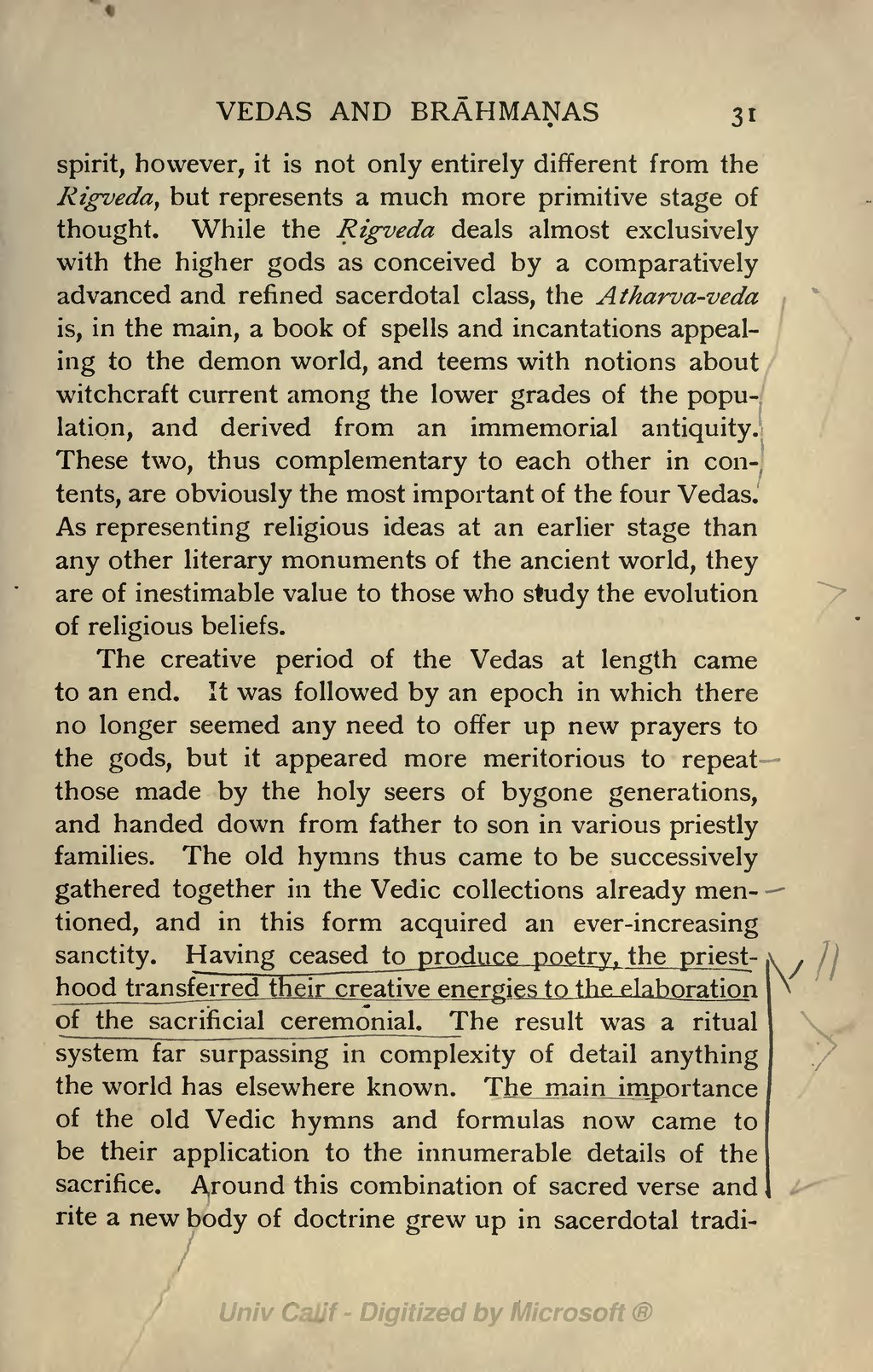spirit, however, it is not only entirely different from the Rigveda, but represents a much more primitive stage of thought. While the Rigveda deals almost exclusively with the higher gods as conceived by a comparatively advanced and refined sacerdotal class, the Atharva-veda is, in the main, a book of spells and incantations appealing to the demon world, and teems with notions about witchcraft current among the lower grades of the population, and derived from an immemorial antiquity. These two, thus complementary to each other in contents, are obviously the most important of the four Vedas. As representing religious ideas at an earlier stage than any other literary monuments of the ancient world, they are of inestimable value to those who study the evolution of religious beliefs.
The creative period of the Vedas at length came to an end. It was followed by an epoch in which there no longer seemed any need to offer up new prayers to the gods, but it appeared more meritorious to repeat those made by the holy seers of bygone generations, and handed down from father to son in various priestly families. The old hymns thus came to be successively gathered together in the Vedic collections already mentioned, and in this form acquired an ever-increasing sanctity. Having ceased to produce poetry, the priesthood transferred their creative energies to the elaboration of the sacrificial ceremonial. The result was a ritual system far surpassing in complexity of detail anything the world has elsewhere known. The main importance of the old Vedic hymns and formulas now came to be their application to the innumerable details of the sacrifice. Around this combination of sacred verse and rite a new body of doctrine grew up in sacerdotal tradi-
